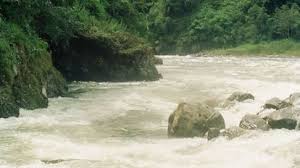Centre to assess green nod for Etalin dam in Arunachal, days after China breaks ground on world’s largest hydel project

The Indian government is preparing to review the environmental clearance for the Etalin Hydroelectric Project in Arunachal Pradesh. This move comes shortly after China began building the world’s largest hydropower project on the Yarlung Zangbo River in Tibet. These parallel projects highlight the growing strategic importance of water resources in South Asia, where rivers cross international borders.
Overview of the Etalin Hydroelectric Project
The Etalin project is located in Arunachal Pradesh’s Dibang Valley. It aims to generate 3,097 megawatts (MW) of clean electricity. The plan includes building two dams on the Dir and Tangon rivers, tributaries of the Dibang River. An underground powerhouse will house 10 generating units, each capable of producing 307 MW. This will make Etalin one of India’s largest hydropower projects.
The project will cover around 1,155 hectares of land. It will affect 18 villages and approximately 285 families in the area. The government has granted initial forest clearance to divert 1,175 hectares of forest land. This will require cutting down about 278,000 trees. Environmentalists have raised concerns over the impact on the region’s rich biodiversity.
China’s Mega Hydropower Project on Yarlung Zangbo
Meanwhile, China has started work on a massive hydropower project on the Yarlung Zangbo River in Tibet. Downstream, this river is called the Brahmaputra in India. China’s project will have a total capacity of nearly 60,000 MW. This dwarfs other large dams, including the famous Three Gorges Dam.
China plans to build five cascading dams over a 50-kilometer stretch of the river. The project is expected to produce about 300 billion kilowatt-hours of electricity annually. The estimated cost exceeds $170 billion. However, India and Bangladesh have expressed concerns about how the dam might affect water flow, agriculture, and the environment downstream.
Strategic and Environmental Considerations
India’s review of the Etalin dam comes at a time when China is rapidly expanding its hydropower capacity. Water in this region is both a vital resource and a tool of geopolitical influence.
For India, the Etalin project represents a major step towards energy independence and sustainable development. The Northeast has vast hydropower potential that remains largely untapped. This project could boost local economies and provide much-needed electricity. However, it also poses environmental challenges. The Dibang Valley is home to dense forests and many wildlife species. Clearing land for the dam could disrupt ecosystems and displace local communities.
China’s mega dam reflects its ambitions to dominate renewable energy and regional power. But its neighbors worry about potential water control during critical agricultural seasons. There are also fears about sediment changes and environmental damage downstream. These concerns have led to calls for greater transparency and cooperation on managing shared rivers.
Impact on Regional Stability and Cooperation
The Etalin and Yarlung Zangbo projects emphasize how closely linked water and geopolitics are in South Asia. The Brahmaputra basin spans multiple countries, making collaboration essential.
India’s cautious approach to approving Etalin reflects a desire to balance development with environmental protection. Experts say future projects must include thorough impact assessments and community input. Sustainable practices will be key to minimizing harm.
China’s hydropower ambitions also require responsible management of shared resources. Regional dialogues on water flow data and emergency plans are critical to reduce risks of conflict and environmental damage.
Looking Ahead
India’s decision on the Etalin dam will set an important precedent for hydropower projects in sensitive areas. It shows the country’s goal to expand clean energy while addressing environmental and social concerns.
China’s mega dam project attracts global attention for its scale and potential impact. While it may transform energy production, it could also heighten regional tensions without cooperative management.
Both nations must focus on sustainable development, open communication, and joint management. This will help ensure energy goals do not come at the expense of ecological health or peace.






